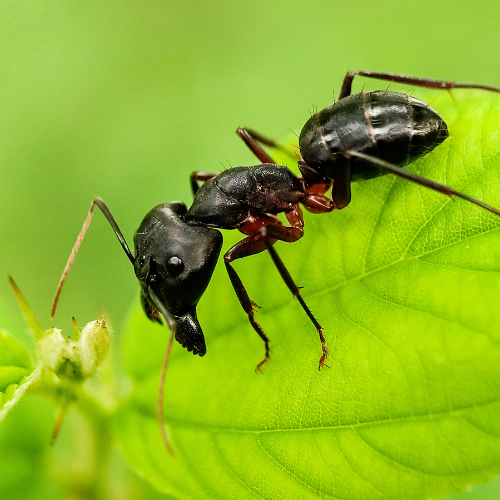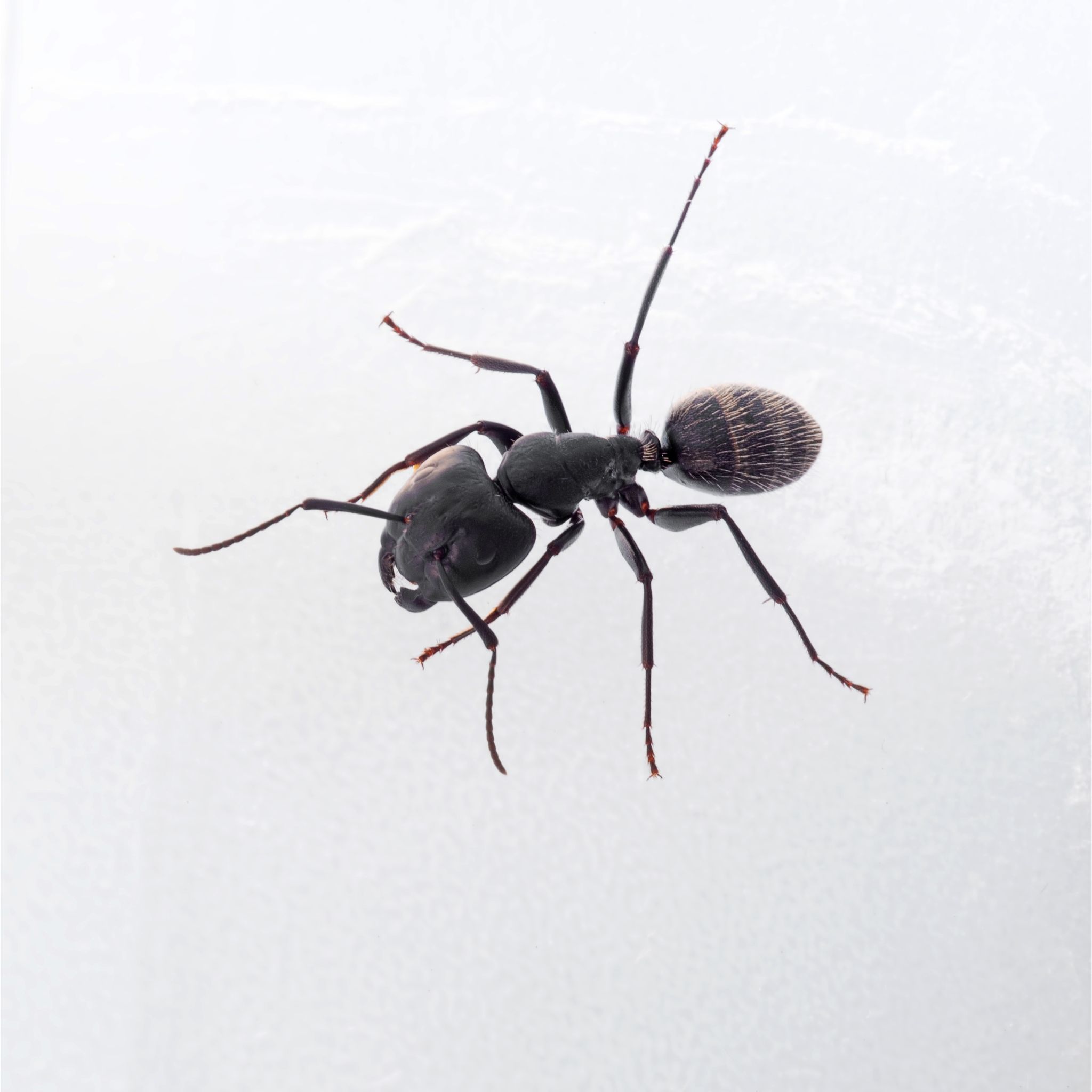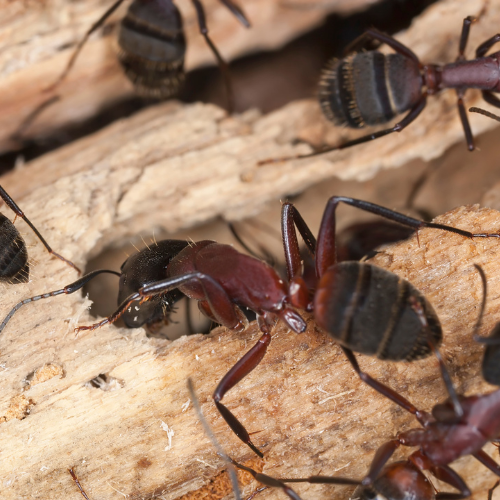Carpenter Ant
Introduction to Carpenter Ants
Carpenter ants, known scientifically as Camponotus spp., stand out as one of the largest ant species found in St. Louis, MO, and throughout the United States. Unlike termites, carpenter ants do not eat wood but excavate it to create their nests, which can lead to significant structural damage over time. Recognizing and addressing a carpenter ant infestation early is crucial to protecting your property.
Recognition
Carpenter ants are identifiable by their size and coloration, with large mandibles that are used for excavating wood rather than feeding. Indications of an infestation include sawdust-like material (frass) ejected from their nests, faint rustling noises within walls, and foraging ants, particularly at night.
Biology
Carpenter ants prefer damp or damaged wood for nest sites, avoiding healthy wood. They establish primary nests outdoors in dead trees or landscape timbers and can create satellite nests indoors. Understanding their nesting habits is vital for effective elimination.
Habits
These ants are most active at night. They forage for food up to 100 yards from their nest, feeding on proteins and sweets, including insect honeydew, juices from fruits, and food items within homes. Their ability to damage wood while nesting necessitates prompt control measures.
Prevention
Preventing carpenter ant infestations involves addressing moisture problems and eliminating potential nesting sites. Ensure proper drainage around your home and repair any water leaks. Keep woodpiles away from the house and trim tree branches that touch the building. Seal cracks and openings in the foundation, walls, and around windows and doors. Regularly inspect your home for signs of ants and frass. Additionally, maintain a clean environment to reduce food sources that attract ants indoors.
Professional
If you suspect a carpenter ant infestation, contacting a professional pest control service like STL Pest Control is crucial. Professionals have the expertise to locate and eliminate nests, ensuring the entire colony is eradicated. They may use a combination of baiting, insecticides, and physical removal of nests to treat the infestation. Additionally, professionals can provide guidance on preventing future infestations by addressing environmental factors and potential entry points.



Our Office









